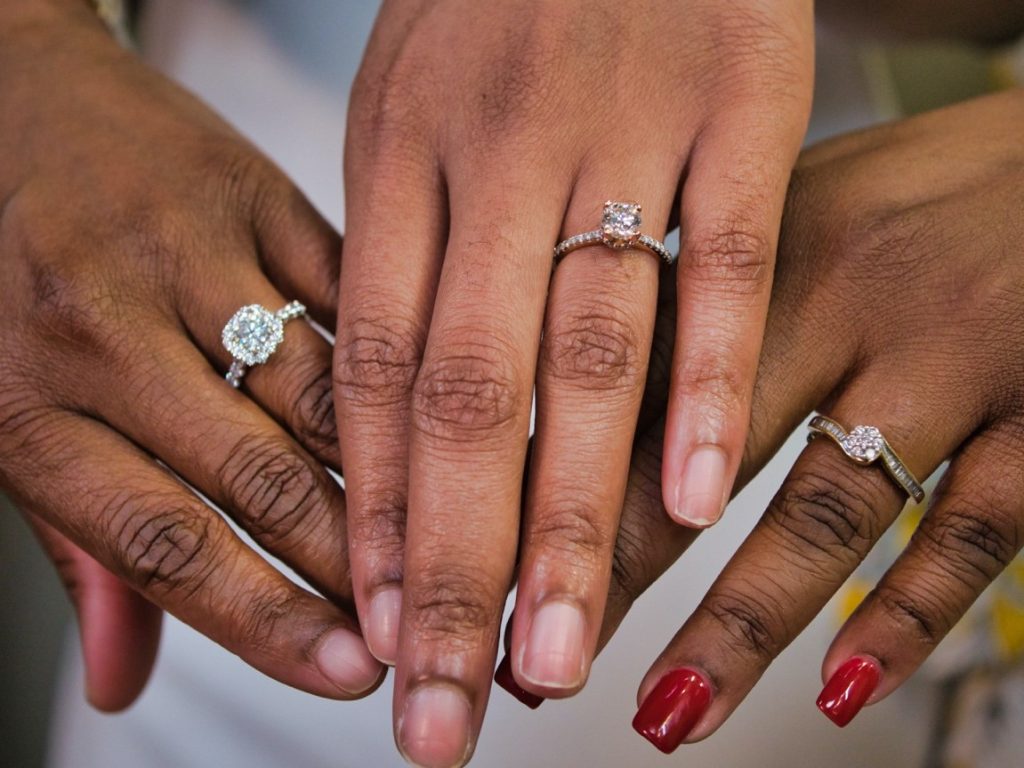Table of Contents
Introduction
Lab diamond substitutes are alternative gemstones that mimic the appearance of natural diamonds but are created in laboratory settings rather than being mined from the earth. With advancements in technology and growing awareness of sustainability, lab diamond substitutes have surged in popularity as ethical and cost-effective alternatives to traditional diamonds.
Types of Lab Diamond Substitutes
Moissanite
Moissanite, a naturally occurring mineral, is one of the most popular substitutes for natural diamonds. It boasts exceptional brilliance and fire, often surpassing that of diamonds. Additionally, moissanite is more affordable than diamonds, making it an attractive option for budget-conscious consumers.
White Sapphire
White sapphire is another lab-grown gemstone that closely resembles diamonds. While it lacks the same level of brilliance as moissanite, white sapphire offers a more subtle, understated sparkle that appeals to those seeking a sophisticated look. However, white sapphire tends to be less durable than moissanite and may require more frequent maintenance.
Cubic Zirconia
Cubic zirconia (CZ) is perhaps the most well-known diamond substitute. It is highly affordable and widely available, making it a popular choice for fashion jewelry and costume pieces. While cubic zirconia lacks the durability and brilliance of moissanite and white sapphire, it offers a budget-friendly option for those looking to achieve the look of diamonds without breaking the bank.
Nano Crystal
Nano crystal is a relatively new entrant in the lab-grown gemstone market. It is engineered to possess optical properties similar to diamonds, including high clarity and brilliance. Nano crystal is often used as an accent stone in jewelry designs, providing a dazzling complement to natural or lab-grown diamonds.
Comparison with Natural Diamonds
Appearance
Lab diamond substitutes closely resemble natural diamonds in appearance, with similar clarity, color, and brilliance. However, subtle differences may be discernible upon close inspection, particularly in terms of light performance and optical characteristics.
Durability
While lab diamond substitutes are durable and suitable for everyday wear, they may not be as hard or scratch-resistant as natural diamonds. Moissanite, for example, ranks lower on the Mohs scale of hardness compared to diamonds but still offers excellent durability for jewelry purposes.
Cost
One of the most significant advantages of lab diamond substitutes is their affordability. Compared to natural diamonds, which can command premium prices based on factors such as rarity and market demand, lab-grown alternatives offer significant cost savings without sacrificing quality or beauty.
Factors to Consider
Budget
For consumers operating within a specific budget, lab diamond substitutes provide an accessible option for acquiring stunning, diamond-like jewelry without overspending. By opting for lab-grown alternatives, individuals can allocate their resources more efficiently while still enjoying the aesthetic appeal of fine jewelry.
Desired Properties
When choosing a lab diamond substitute, it’s essential to consider personal preferences regarding appearance, durability, and overall aesthetic. Each type of substitute offers unique characteristics and qualities, allowing consumers to select the option that best aligns with their individual tastes and lifestyle.
Ethical Concerns
One of the primary motivations for choosing lab diamond substitutes is the ethical implications associated with traditional diamond mining. By opting for lab-grown alternatives, consumers can support sustainable practices and minimize the environmental and social impacts typically associated with diamond extraction.
Care and Maintenance
Cleaning
To maintain the beauty and brilliance of lab diamond substitutes, regular cleaning is essential. Using a soft-bristled brush and mild soap solution, gently scrub the surface of the jewelry to remove any dirt or debris. Rinse thoroughly with warm water and pat dry with a soft cloth to prevent water spots or residue.
Storage
When not in use, store lab diamonds jewelry in a clean, dry place away from direct sunlight and extreme temperatures. Avoid storing multiple pieces together to prevent scratching or damage. Consider using a soft pouch or jewelry box with individual compartments to protect each item and minimize the risk of abrasion.
Conclusion
In summary, lab diamond substitutes offer a compelling alternative to natural diamonds, providing consumers with cost-effective, ethical, and visually stunning options for jewelry. Whether opting for moissanite, white sapphire, cubic zirconia, or nano crystal, individuals can enjoy the beauty and luxury of diamond-like gemstones without compromising on quality or conscience.

